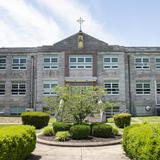School Highlights
Orleans Technical College serves 487 students (79% of students are full-time).
The college's student:teacher ratio of 9:1 is lower than the state community college average of 15:1.
Minority enrollment is 82% of the student body (majority Black), which is more than the state average of 48%.
Quick Stats (2025)
- Enrollment: 487 students
- Acceptance Rate: 68%
- Student:teacher ratio: 9:1
- Minority enrollment: 82%
- Source: Integrated Postsecondary Education Data System (IPEDS)
Top Rankings
Orleans Technical College ranks among the top 20% of public schools in Pennsylvania for:
Category
Attribute
Completion Rates
Debt For Students
School Overview
The teacher population of 52 teachers has stayed relatively flat over five years.
Orleans Technical College
(PA) Community College Avg.
Carnegie Classification
Not applicable, not in Carnegie universe (not accredited or nondegree-granting)
Baccalaureate/Associate's Colleges: Mixed Baccalaureate/Associate's
Institution Level
Less than 2 years (below associate)
At least 2 but less than 4 years
Institution Control
Private not-for-profit
Private not-for-profit
Total Faculty
52 staff
58 staff
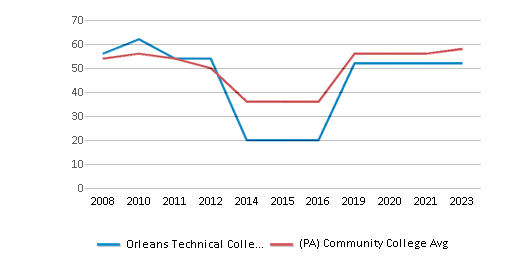
Number of Programs Offered
6
27
School Calendar
Student Body
The student population of Orleans Technical College has grown by 66% over five years.
The student:teacher ratio of 9:1 has increased from 5:1 over five years.
The Orleans Technical College diversity score of 0.66 is less than the state average of 0.68. The school's diversity has declined by 10% over five years.
Total Enrollment
487 students
361 students
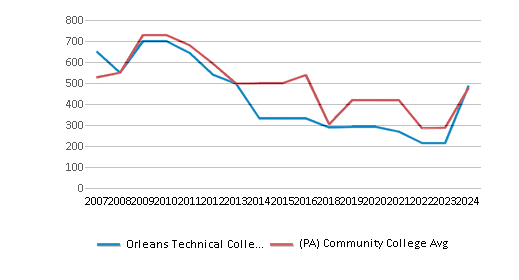
Student : Teacher Ratio
9:1
15:1
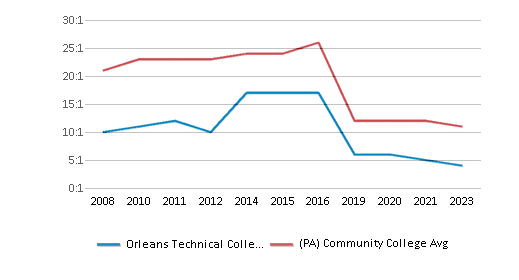
# Full-Time Students
385 students
310 students
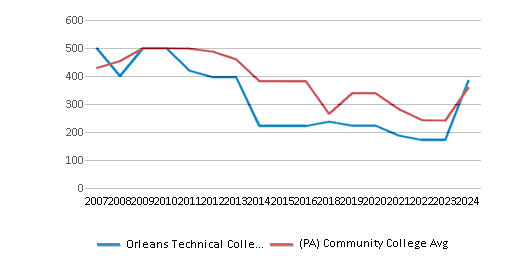
# Part-Time Students
102 students
134 students
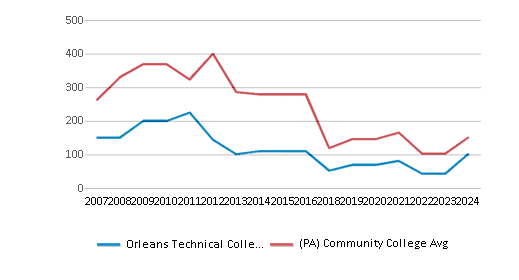
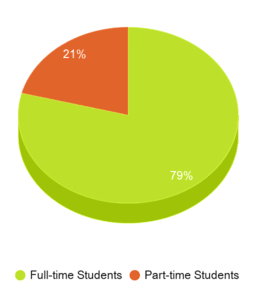

# Enrollment Undergraduate
487 students
300 students
# Full-Time Undergraduate Students
385 students
300 students
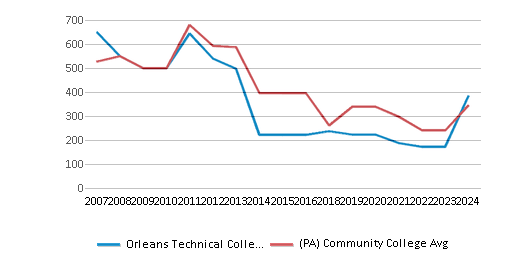
# Full-Time Graduate Students
n/a
10 students
# Part-Time Undergraduate Students
102 students
134 students
# Part-Time Graduate Students
n/a
12 students
Total Dormitory Capacity
n/a
330 students
% American Indian/Alaskan
1%
n/a

% Asian
2%
5%
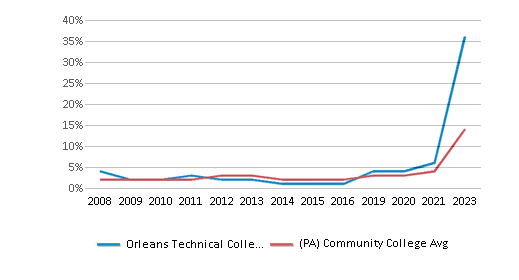
% Hispanic
21%
11%
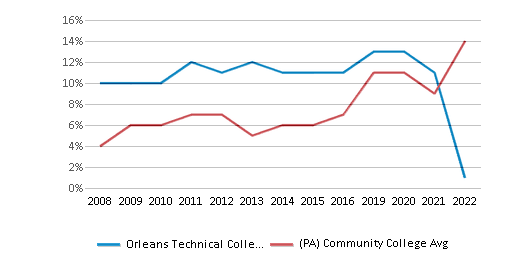
% Black
51%
15%

% White
18%
52%
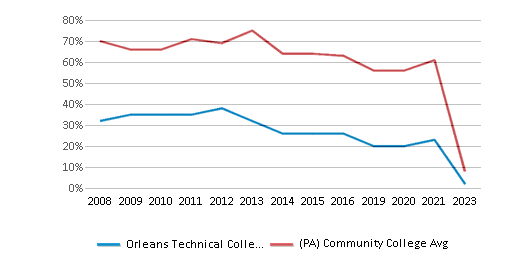
% Hawaiian
n/a
3%
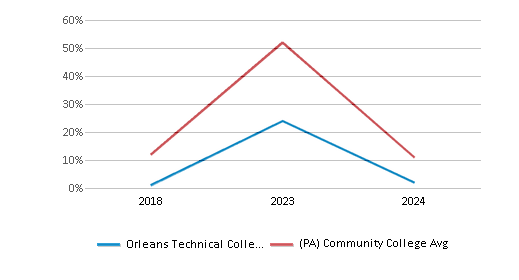
% Two or more races
1%
3%
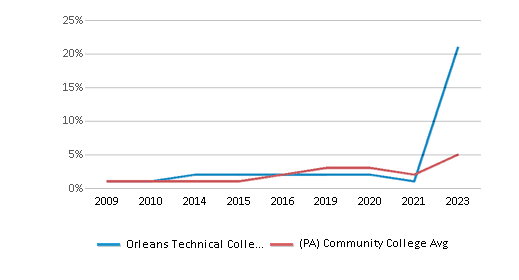
% Non Resident races
n/a
1%
% Unknown races
5%
10%
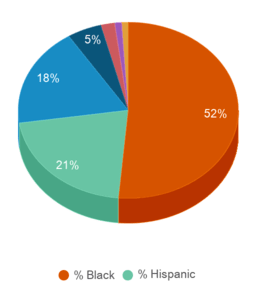
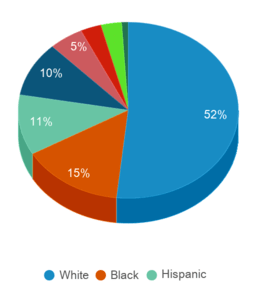
Diversity Score
0.66
0.68
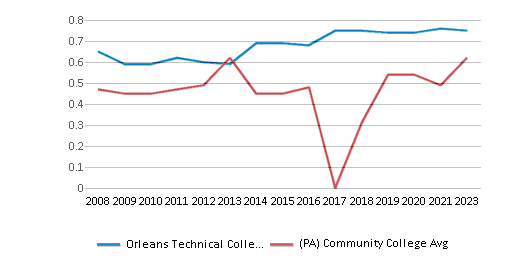
College Completion Rate (Students who graduate in less than 4 years)
0.8242%
0.6111%

College Completion Rate (Students who graduate in 4 years or more than 4 years)
n/a
0.3822%
Average Graduate Earnings (10 Years)
$32,800
$34,900
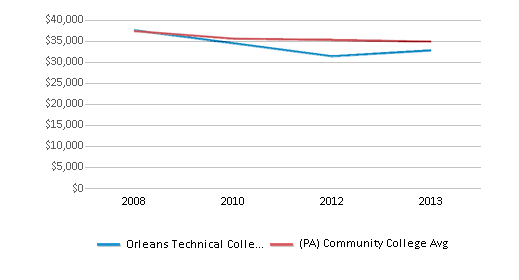
Tuition and Acceptance Rate
% Students Receiving Some Financial Aid
87%
91%
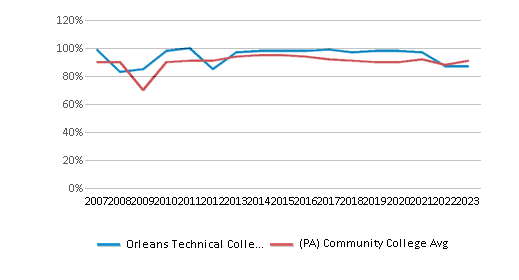
Median Debt for Graduates
$7,521
$13,620
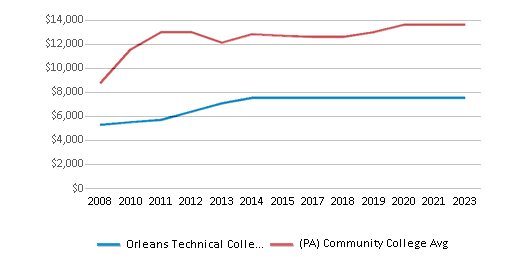
Median Debt for Dropouts
$3,761
$6,234
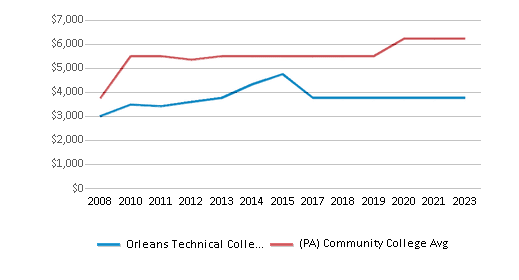
Acceptance Rate
68%
78%
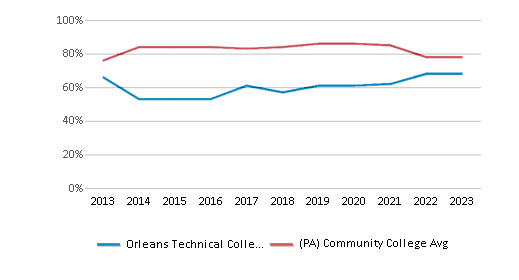
SAT Reading
n/a
460
SAT Math
n/a
470
SAT Writing
n/a
435
ACT Composite
n/a
20
ACT English
n/a
20
ACT Math
n/a
21
ACT Writing
n/a
7
Source: 2024 (or latest year available) Integrated Postsecondary Education Data System (IPEDS)
Frequently Asked Questions
What is the acceptance rate of Orleans Technical College?
The acceptance rate of Orleans Technical College is 68%, which is lower than the state average of 78%.
What is Orleans Technical College's ranking?
Orleans Technical College ranks among the top 20% of community college in Pennsylvania for: Highest completion rates and Least debt for graduating students.
In what neighborhood is Orleans Technical College located?
Orleans Technical College is located in the Northeast Philadelphia neighborhood of Philadelphia, PA. There are 1 other community '.college.' located in Northeast Philadelphia.
Recent Articles

Obtaining Your Bachelor's Degree at a Community College
Explore the evolving landscape of community colleges offering bachelor's degrees, addressing affordability, accessibility, and workforce needs.

A to Z of Community College Certificates and Courses
From business and healthcare to technology and skilled trades, the article showcases the breadth of options available to students seeking to enhance their knowledge, develop new skills, or pursue career advancement.

What is a Community College?
This comprehensive guide explains what a community college is, its history, and its role in higher education. It covers the types of programs offered, differences from four-year colleges, benefits of attending, and important considerations for prospective students, providing valuable insights for those exploring educational options.

